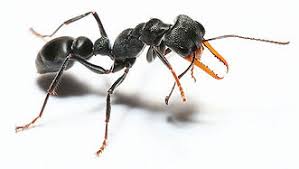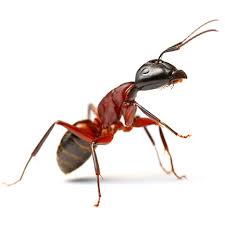OUR COMPREHENSIVE ANT TREATMENT & CONTROL METHODS
Ant Spraying
Our residual sprays are designed to provide lasting protection by leaving a fine insecticide film. These sprays are non-repellent, allowing ants to carry the insecticide back to their nest, ensuring complete colony elimination.
Ant Baiting
Our APVMA approved baits target the entire colony including the queen, offering an effective long-term solution. These baits are a blend of carbohydrates, sweeets and protein ensuring maximum uptake by ants.
Ant Dusting
For immediate control in hidden areas like wall cavities and roof voids, we use APVMA approved insecticidal dust. This method is ideal for a rapid knockdown effect and is often combined with other treatments for enhanced efficacy.
Contact us for an
ant free home 139 007
Understanding Ant Infestations In Adelaide
Ants are remarkable for their social organisation and ability to thrive in various environments. However, when these creatures invade your space, they can become a significant nuisance and cause extensive damage. At Eco Pest Group, we understand the complexities of ant behaviours and employ targeted strategies to manage these pests effectively keeping Adelaide homes and businesses ant free.
The Dangers of Ant Infestations
Ignoring an ant infestation in Adelaide can lead to severe consequences, such as:
- Risk of painful bites, with some species like fire ants causing allergic reactions.
- Potential damage to electrical wiring, leading to appliance failures or electric blackouts.
- Increased risk of electrical fires, particularly in power sockets.
- Spoilage of food products and attraction of other pests like spiders.
Time To Call In The Adelaide Ant Control Experts?
SPECIALISED SOLUTIONS FOR EVERY ADELAIDE ANT SPECIES
From the nuisance of bull ants to the destructive nature of white ants, our Adelaide ant pest control services are tailored to address the specific species invading your space. Whether it’s a small ant hill or a large-scale infestation, our team is equipped to handle it all.

There are about 90 species of Bull Ants in Australia with diverse behaviours and life cycles. Some of the smaller species are known as jumper ants after their habit of aggressively jumping towards intruders while some of the larger species have even been responsible for deaths in people.
Bull ants are large, alert ants that can grow up to 40mm. They have characteristic large eyes and long, slender mandibles and a potent venom-loaded sting. They have superior vision able to track and even follow intruders from a distance of 1 metre. Many species of bull ants have bright red or orange colours on the head or abdomen.
Bull Ant Facts
- Bull ants have been known to cause human deaths
- The smaller species, which often jump very quickly at threats, are commonly known as jumper ants.
- Some larger species have a stinger located near the ants’ abdomen that can inject a powerful venom that’s been known to cause a sometimes deadly allergic reaction in humans.
- Most Bull Ant species are highly aggressive
- Bull Ants have exceptional eyesight and will relentlessly target anything they see as a threat
- Unlike bees, which can only sting once, Bull Ants can use their sting repeatedly
- Female Bull Ants briefly fly and then live in the dark underground as queens for up to 15 years

Sugar ants are one of the most common species of ants across Australia. Sugar Ant workers are dark brown-black and reach 3-5mm in length. The queens are mid brown and much larger, they can reach 15mm long.
The queen is characterised by 2 pairs of wings which are fore and hind wings hooked together, nests are usually located outdoors and they can be built in soil, hollowed trees, found in grasses or under paving slabs, behind fascias or any building voids. Foraging workers enter houses regularly in search of food.
The most common sign of a Sugar Ant infestation is the presence of the ants, themselves. Commonly infestations begin from trails outside as they forage for food and moisture. As things worsen they begin to set up their nests in wall cavities and roof voids etc often shorting out power points as their nests amass.
Pest Aid are the black ant control experts.
Sugar Ant Facts
- They prefer sweet foods
- Sugar ants are social insects
- When climatic conditions are right they will fly and reproduce
- After mating, the males die

The Meat Ants have a dark-bluish body and red head. It is a medium to large species, measuring 6–12 mm. The meat ant workers and males are approximately the same sizes at 6–7 mm and 8 mm, respectively. The queens are the largest and appear mostly black, measuring 12.7 mm.
The iridescence in workers ranges from green or blue to plain green and purple, varying in different body parts and castes. Colonies range in size, varying between 11,000 individual ants to 300,000.
The Meat Ant is active throughout most of the day, especially when it’s warm.
Meat Ants forage on trees and collects sweet substances such as honeydew and nectar, and also captures insects or collects the remains on animals.
Disturbed soil in urban areas and live ants entering the structure to feed on food are the most common signs of meat ants.
Meat Ant Facts
- A number of predators eat these ants, including the Short-Beaked Echidna, numerous species of birds, blind snakes and spiders
- Meat Ants cannot sting, but they can induce irritating bites and secrete a defensive fluid from the end of their abdomen
- Newly constructed suburbs provide new nest sites for meat ants
- Meat Ants are equipped with powerful jaws and communicate with each other using chemical cues
- Meat Ants bite repeatedly and aggressively defend their nests and territories
- Meat Ants can consume a dead animal placed on a nest in a matter of weeks
- Unpaved streets, gravel paths and driveways are among the many new sites meat ants could nest

Fire ants are dangerous, imported pests that could spread to large areas of Australia. Fire ants could severely damage the environment, our outdoor lifestyle, and the agriculture and tourism industries. They inflict a painful, fiery sting, which can, in rare cases, cause a severe acute allergic reaction (anaphylaxis) Fire Ants are copper brown in colour with a darker abdomen and are 2 – 6 mm long.
Fire ants were first detected in Brisbane in February 2001, they have spread across South East Queensland.
Fire Ants nests have been found in an area spanning an estimated 600,000 hectares.
There have been changes have been made to the Biosecurity Regulation 2016 to help stop the spread through human-assisted movement.
Report them to the National Fire Ant Eradication program within 24 hours of sighting by calling 13 25 23 or you can complete the simple online form.
Fire Ant Facts
- More than 50 agricultural and horticultural crops, as well as turf and nursery species, can be affected by fire ants
- Fire ants feed voraciously on small ground fauna, including insects, spiders, lizards, frogs, birds and mammals
- Fire ants can damage sensitive electrical equipment
- Stings from fire ants can cause a painful, burning, itching sensation, lasting up to 1 hour
OUR COMPREHENSIVE ANT TREATMENT PEST CONTROL METHODS
Why choose us for your Adelaide ant control service?
Ant Spraying
Our residual sprays are designed to provide lasting protection by leaving a fine insecticide film. These sprays are non-repellent, allowing ants to carry the insecticide back to their nest, ensuring complete colony elimination.
Ant Baiting
Our APVMA approved baits target the entire colony including the queen, offering an effective long-term solution. These baits are a blend of carbohydrates, sweeets and protein ensuring maximum uptake by ants.
Ant Dusting
For immediate control in hidden areas like wall cavities and roof voids, we use APVMA approved insecticidal dust. This method is ideal for a rapid knockdown effect and is often combined with other treatments for enhanced efficacy.
ANT CONTROL FAQS
Most Ant infestations are fairly obvious but here are a few giveaways.
- The most obvious sign of an ant problem is seeing them. A few here and there isn’t concerning, but when you see hundreds, that’s when you know you need to call the ant removal experts
- Ant nests are usually small-medium sized mounds of soil or dirt. However, there are some species of ants that prefer to make nests in walls or other quiet places.
The best way to control ants, is to get a professional ant removal treatment done (especially if you currently have an infestation). If you’ve just had a treatment done, here are our top ant management tips.
- Eliminate any food sources (i.e. keep your kitchen tidy by wiping down benches, cleaning crumbs off the floor and disposing of garbage regularly)
- Keep watch of the tell-tale signs of ants (i.e. ant trails, nests)
- Seal any cracks or crevices to prevent ants getting inside
Ants bites can be nasty and need to be taken serious in some situations.
- If you’re stung or bitten by ants an icepack can help relieve pain and swelling but seek medical attention quickly if you show any signs of an allergic reaction
Yes, some ant species are capable of causing anaphylactic reactions.
- The most dangerous ant in the world is the ‘Bulldog Ant’ (Myrmecia pyriformis) which is known to have caused at least 3 human fatalities since 1936, according to the Guinness World Records. Found in coastal regions of Australia, it measures 20-millimetre-long and uses its sting and jaws to attack.
- Six ant sting-related fatalities were identified, five in Tasmania and one in New South Wales, (5/6) had prior histories of jumper or bull ant (Myrmecia spp.) venom allergy
- Fire Ant deaths, A study in the US shows a total of 83 fatal anaphylactic shock deaths that resulted from red-imported fire ant stings, 22 of which occurred in Florida followed by 19 that occurred within Texas.
At Pest Aid, we use a combination of.
- Gel baits and granules in areas where kids or pets cannot access
- Insecticidal dusts into roof spaces and wall cavities
- Direct nest injection
- Barrier sprays in cracks and crevices
There are numerous reasons.
- It could be that they’re looking for a food or water source, or that you’ve had a nest that’s gone unchecked for some time
- Conducive weather conditions are also a major contributor to ant infestations
ANT CONTROL VIDEOS
BULL ANTS
There are about 90 species of Bull Ants in Australia with diverse behaviours and life cycles.
FIRE ANTS
Fire ants are dangerous, imported pests that could spread to large areas of Australia.
SUGAR ANTS
Sugar ants are one of the most common species of ants across Adelaide.
MORE ADELAIDE PEST CONTROL SERVICES
Have more than one pest problem? Let the experts at Eco Pest Group Adelaide take care of it for you. Whether you’ve got a termite infestation, or cockroaches infestation in your kitchen. Eco Pest Group Adelaide has your back.

